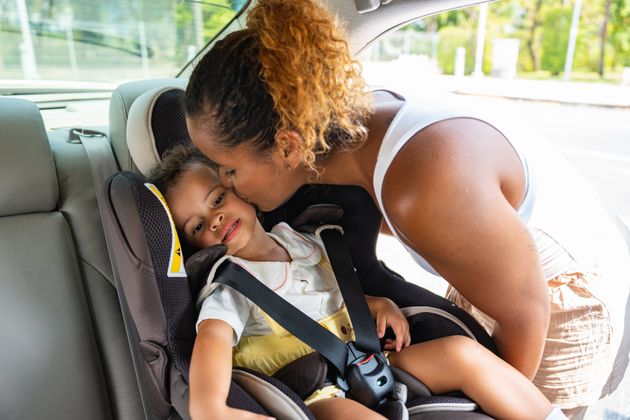Let’s face it, car seats are a bit of a minefield for the unacquainted. Heck, I’m two years into using one and it still baffles me at times.
When you bring your new baby home, putting them in their car seat can be an anxiety-inducing experience. Are their little necks ok? Are they positioned correctly? Are the straps tight enough – or too tight? There’s a lot to think about.
Then as they grow older, you get a bit more settled with using them. But everyday remains a school day for parents…
You learn there’s a certain point where you can turn the car seat from rear-facing to forward-facing (but that doesn’t necessarily mean you should do it).
You learn that putting your child in their winter coat and then strapping them in can be dangerous (always remove thick winter clothes first).
You also learn you’ll need to keep adjusting and monitoring the car seat as your child grows. Whew, the list is endless.
A recent Instagram post by CPR Kids explains why car seat safety is so important – and has reintroduced the idea of a ‘pinch test’ which could prove life-saving in the event of a car collision.
How to do the pinch test
The idea is super simple: after you’ve strapped your child into their car seat, you pinch at the straps horizontally near where your child’s collar bone is.
If you can pinch the material between your fingers, the straps aren’t tight enough. But if you can’t pinch the straps, it means your child is strapped in securely.
One mum credits the pinch test and her car seat’s position for saving her son’s life.
Car seat positioning is hugely important
CPR Kids shared how, in 2020, a mother was in a car accident with her young son in the back of their car. She had done the pinch test before setting off and had positioned her child rear-facing in his car seat.
“The next thing I remember was men putting me in an ambulance and telling me that I had been in an accident,” she said.
She found out her son had been airlifted to hospital. After spending the night in hospital, she was finally able to go and see him.
“Nothing could have prepared me for seeing my little man in that massive bed with so many tubes and wires everywhere. He had a fractured skull, a brain bleed, high pressures in the brain, and a torn ligament in his neck,” she recalled.
After four surgeries and four weeks spent in hospital, she was able to take her son home without any permanent issues.
She concluded: “Not a day goes by where I don’t think about what life would be like if we weren’t so lucky. If I hadn’t known to keep him rearward facing, he definitely wouldn’t be here the doctors have told me.”
Why is rear-facing better?
According to the UK government, children must be rear-facing until they’re over 15 months old – however safety experts recommend you keep them rear-facing for as long as possible.
Some car seats allow for children to remain rear-facing up to the age of four.
Crash tests have shown rear-facing seats are far safer than forward-facing ones.
As experts at In Car Safety Centre explain: “The most dangerous car accidents are frontal collisions. They represent the accidents where the highest speeds and the greatest forces are at play.
“When a child is forward-facing and a frontal collision occurs the child is flung forward in the seat, being caught by the harness. This puts stress on the neck, the spine, and the internal organs.”
But when a baby is rear-facing, the child is thrown back into the car seat, putting less stress on the more fragile parts of the body, such as the neck.







